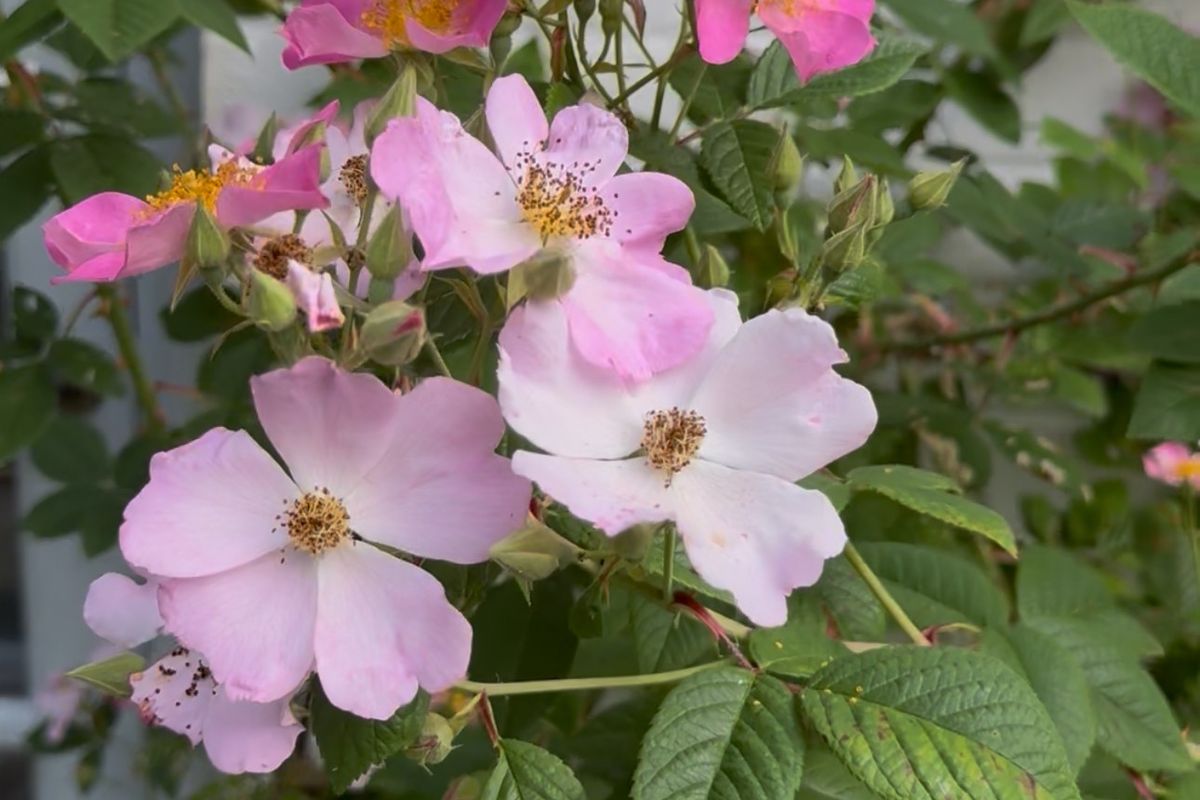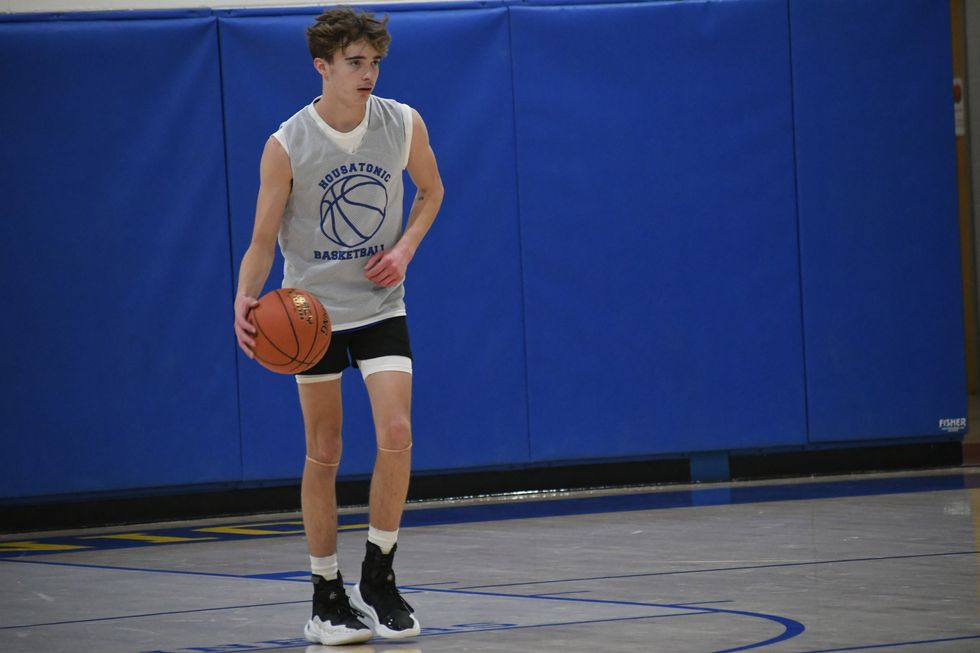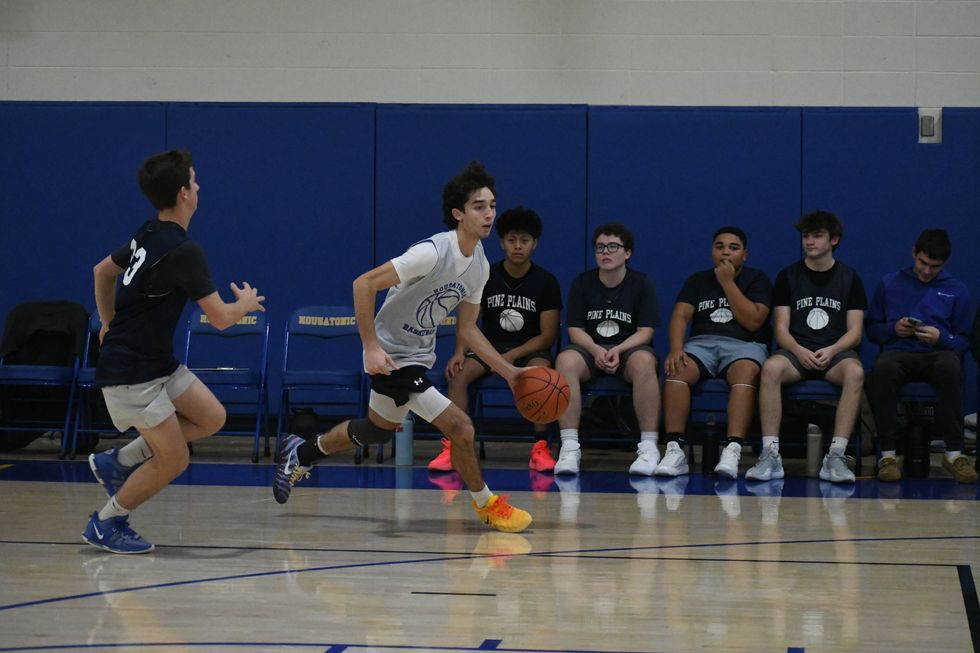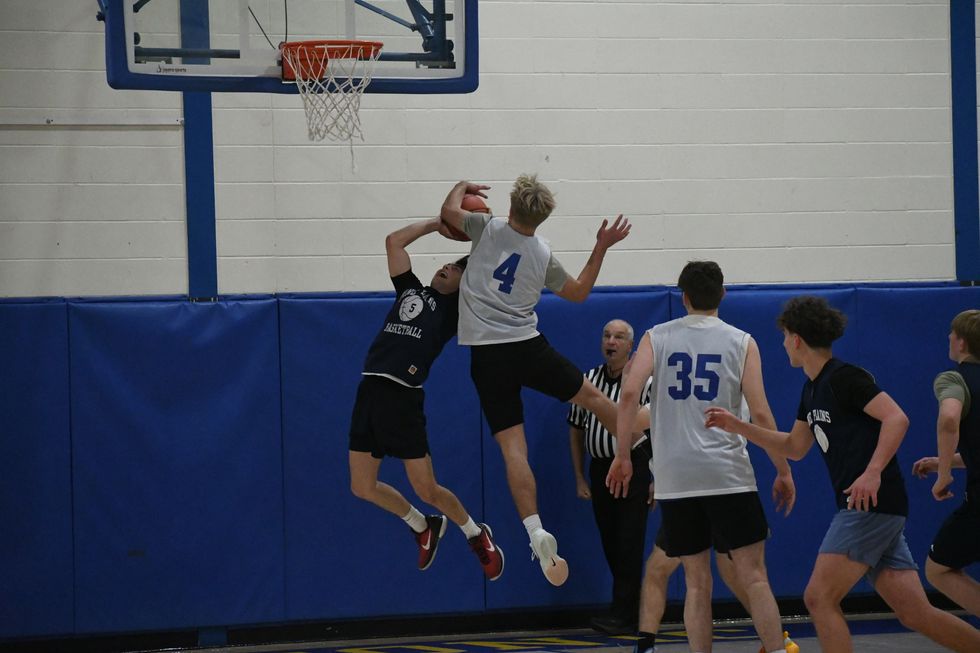When the guide gets it wrong

Rosa setigera is a native climbing rose whose simple flowers allow bees to easily collect pollen.
Dee Salomon

Rosa setigera is a native climbing rose whose simple flowers allow bees to easily collect pollen.
After moving to West Cornwall in 2012, we were given a thoughtful housewarming gift: the 1997 edition of “Dirr’s Hardy Trees and Shrubs.” We were told the encyclopedic volume was the definitive gardener’s reference guide — a fact I already knew, having purchased one several months earlier at the recommendation of a gardener I admire.
At the time, we were in the thick of winter invasive removal, and I enjoyed reading and dreaming about the trees and shrubs I could plant to fill in the bare spots where the bittersweet, barberry, multiflora rose and other invasive plants had been.Years later, I purchased the 2011 edition, updated and inclusive of plants for warm climates.
On the cover of the new edition, a quote from Adrian Higgins of The Washington Post boasts, “Michael Dirr is the oracle of ornamental horticulture. I trust his judgements implicitly.”I heartily disagree with Mr. Higgins:I blame this book — and my poor use of it — for some of my worst tree and shrub choices.
I realize some readers might find this declaration inflammatory. The book still occupies a place of high regard among experienced and novice gardeners alike, so please allow me to explain.
In addition to giving the reader his opinion on the aesthetic worthiness of the woody plants included in the book, Mr. Dirr makes good on the book’s title with a review of each species’ hardiness. What makes a tree hardy?It thrives in its intended site, resisting disease with leaves and bark not readily eaten by insects and other critters.
Non-native plants make up the majority of the recommended hardy plants in the book.And here is why:Native trees and shrubs are, by evolution’s design, food source and host to our native fauna — critters large and small. There is no substitute equal to the fauna’s co-evolved flora.A native caterpillar cannot eat a kousa dogwood leaf, as it has not evolved to digest it.Non-native plants seemingly have the advantage if the lens we look through values pristine, uneaten leaves.
In the days when there were sufficient thriving ecosystems to maintain local habitats, a non-native specimen tree here and there was just fine.But where we live in Northwest Connecticut, our woods, meadows, marshes and other natural areas have, for a couple of decades, been severely compromised by invasives that have almost entirely removed the food sources for native insects. It is up to us — now — to plant native plants to save the food chain.Without insects, not only will native animals die, but human food sources will also be at risk.
The security of our food pipeline seems a worthy exchange for some caterpillar-eaten leaves — and to be clear, we’re not talking about non-native infestations such as spongy moth, but rather native caterpillars, which are the singular food source for nesting birds.
My issue is that, in being a trusted source for plant selection, Dirr’s book should give equal — if not prioritized — space to information on ecological impact.For example, it would be good to know when selecting a tree, that a native oak provides food and other ecosystem services to more than 400 native animal species, while a native tulip poplar supports fewer than 30 — though that includes the Eastern tiger swallowtail. Including information on the birds and insects attracted to a given plant would enable reader to weigh these factors in choosing what to grow.But this information is not mentioned at all.
Dirr makes no mention of the role some of these plants have played in the degradation of our natural areas — an omission that is highly relevant, as many of the plants featured in his book are, in fact, invasive culprits. Plants like barberry, porcelain berry and tree of heaven are showcased for consideration alongside native plants without recognition of the devastating infestations they can manifest. Tree of Heaven is now responsible for hosting the spotted lanternfly, which is devastating crops.
Similarly Euonymous alatus (winged euonymous) and Actinidia arguta (hardy kiwi) — two highly invasive plants touted in the book — have been banned or are close to being banned for sale from nurseries in the state of Massachusetts. To his credit, Dirr does point out the invasive nature of Ligustrum sinense (Chinese privet), calling it “a terrible and devastating escapee that terrorizes floodplains, fencerows and even open fields, reducing native vegetation to rubble.” Yet Japanese honeysuckle gets an understated warning, with Dirr describing this massively invasive shrub as “bullying their way into understory and open areas.”
The latest edition of Dirr’s book devotes seven pages of copy and photos to various Berberis species, about which Dirr waxes poetic. He notes the addition of “30 new cultivars” in the latest revision and complains that “this species is under assault for its aggressive invasive nature.” He refers to Berberis thunbergii — Japanese barberry, the most invasive of them all — as “the species of major importance in garden commerce.” This plant has already been outlawed for sale in New York, Pennsylvania, New Hamphsire and Maine.A few weeks ago, a bill was passed in Connecticut recognizing the harm of a broad group of invasive plants. Under this new legislation, barberry will be phased out from sale or transport by October 2028.
In understating the invasive nature of many non-natives and de-prioritizing the importance of native species, Dirr’s widely used reference may be partly responsible for many a devastated woodland, forest, meadow and marsh in New England — if not across the U.S.Certainly, the evolution of species, and scientific knowledge about the environment, is changing faster than new editions of books can be printed. I can only hope that if a new edition of Mr. Dirr’s reference book is in the works that it will account for this criteria we now know to be vital in plant selection.
Which brings me back to that quote on the cover from The Washington Post and the larger issue it suggests:Should “ornamental horticulture” get a pass when it comes to ecological survival?I think we can agree — it should not.The consequences are simply too destructive.
Dee Salomon ‘ungardens’ in Litchfield County.
The Salisbury Winter Sports Association (SWSA) will host its annual Junior Jump Camp, a two-day introduction to ski jumping, on Saturday and Sunday, Dec. 27 and 28, from 9 a.m. to 2 p.m. at Satre Hill in Salisbury.
The camp is open to children ages 7 and up and focuses on teaching the basics of ski jumping, with an emphasis on safety, balance and control, using SWSA’s smallest hill. No prior experience is required.
The cost is $50 per child and includes instruction and lunch on both days. For more information or to register, visit www.skireg.com/swsa-camp or email info@jumpfest.org
Jesse Bunce, first selectman of North Canaan.
LITCHFIELD — The Northwest Hills Council of Governments welcomed six newly elected municipal leaders Thursday, Dec. 11, at its first meeting following the 2025 municipal elections.
The council — a regional planning body representing 21 towns in northwest Connecticut — coordinates transportation, emergency planning, housing, economic development and other shared municipal services.
Barkhamsted First Selectman Meaghan Cook, Goshen First Selectman Seth Breakell, Kent First Selectman Eric Epstein, Norfolk First Selectman Henry Tirrell, North Canaan First Selectman Jesse Bunce and Torrington Mayor Molly Spino were each elected to their post in November.
They filled the seats of their predecessors on the COG, who were each given a toast of appreciation: Nick Lukiwsky (Barkhamsted), Todd Carusillo (Goshen), Marty Lindenmeyer (Kent), Matt Riiska (Norfolk), Brian Ohler (North Canaan) and Elinor Carbone (Torrington).
COG Executive Director Rob Phillips said the outgoing members were given a going away mug that read “You’re living the dream still.” Members voted to appoint Warren First Selectman Greg LaCava to fill a vacancy on the Council’s Executive Committee. COG members voted by paper ballot, and LaCava defeated Burlington First Selectman Doug Thompson for the vacant seat.
Ryan Segalla takes a fadeaway shot over a defender.
FALLS VILLAGE — Housatonic Valley Regional High School’s boys basketball team defeated Pine Plains High School 60-22 in a scrimmage Tuesday, Dec. 9. The non-league preseason game gave both sides an opportunity to run the court ahead of the 2025-26 varsity season.
HVRHS’s senior-heavy roster played with power and poise. The boys pulled ahead early and kept their foot on the gas through to the end.
By halftime the score was 33-8. Junior varsity players subbed in for the second half, but not before the starters got some in-game dunk practice. By the end Housatonic totaled 60 points to Pine Plains’ 22.

Nick Crodelle led the Mountaineers offensively with 13 points. Anthony Labbadia and Wyatt Bayer scored nine points each. Anthony Foley scored eight points. Owen Riemer and Ryan Segalla each scored seven points. Peyton Bushnell hit a three-pointer. Jaxon Visockis and Henry Berry each scored two points.
HVRHS begins Berkshire League competition on the road at Nonnewaug High School Tuesday, Dec. 16, with a 6 p.m. tip off.


Katie Moore delivers toys to the Stuff a Truck campaign held by the Kent Volunteer Fire Department last weekend. Donated toys are collected so that parents, who need some assistance, may provide their children with gifts this Christmas. Accepting the donation are elves Fran Goodsell and Karen Iannucci
KENT — Santa’s elves were toasty warm as they collected toys for the children of Kent.
Keeping with annual tradition, Fran Goodsell and Karen Iannucci manned the Stuff a Truck campaign sponsored by the Kent Volunteer Fire Department on Saturday, Dec. 6, and Sunday, Dec. 7. Sitting in front of a fire pit in the firehouse parking lot between donations from residents, they spoke of the incredible generosity displayed every season. That spirit of giving was clear from the piles of toys heaped on a table.
“This is always so gratifying,” said Goodsell, noting that certain businesses, including High Watch Recovery Center, Wilson’s, and Kent and South Kent schools needed a “shout out” for all they’ve done. She said South Kent School focuses on gifts for older children, which is a group that often is overlooked.
Unwrapped contributions are sought for children 1 to 15 years old who might otherwise find little or nothing from Santa, they said. The bounty will be set up at the Community House on Thursday, allowing parents to come and take what they want. If there are still items left, grandparents are invited to “shop.”
The atmosphere was festive Saturday, as a stuffed dog began barking a Christmas tune whenever someone walked in front of it. A large decked-out bear posted at the parking lot entrance reminded passersby of the event. Visiting children were able to get a close-up look at the fire truck and walk through the firehouse if they wished.
Goodsell and Iannucci were very grateful to those who donated wood for the fire pit. “And so many asked if they could bring us coffee or hot chocolate,” said Iannucci.
Goodsell said many who came talked about having grown children who were recipients of the gifts when their families were struggling. “They are so glad to be able to give back,” she said.